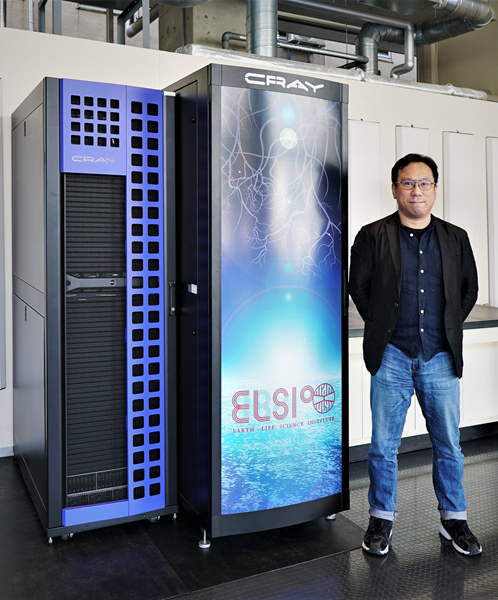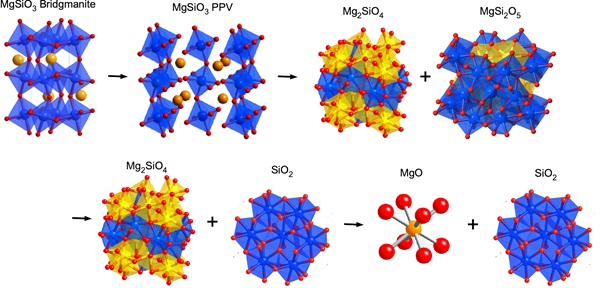
A few tens to hundreds of atoms are arranged as data in this computer cluster, and numerical computation of the behaviour of electrons in the potential generated by the atoms is performed based on quantum mechanics. Thus, the properties of the material can be computed with high accuracy, which makes it possible to reproduce experiments. This has allowed me to study the properties of components of large macroscopic astronomical bodies, such as Earth and planets, from the very microscopic atomic level.
Reasons for performing computations with the computer cluster
Why do I perform computations with the computer cluster? You may wonder if I can make direct measurements experimentally. There are reasons for my approach. The biggest reason is that the temperature, pressure, and material composition used in my research are difficult to achieve experimentally. The other reason is 'prediction.' I computationally investigate the properties of materials that have never been experimentally investigated. I predict intriguing properties and suggest experimental researchers reproduce the properties. This is the best part of my research.
As typical examples of studies using ELSI's CRAY computer cluster, I will take two studies: a computation of liquid iron alloys at the temperature (greater than 4,000°C) and pressure (100 to 350 GPa) of the Earth's outer core and computation of phase transitions in magnesium silicate in the deep super-Earth (an Earth-like terrestrial exoplanet) (see the figure below). These are computations of temperature and pressure conditions that are difficult or almost impossible to achieve experimentally, but they successfully provided indispensable information on the components of the Earth's outer core to study the structure of the deep super-Earth.

Value of a supercomputer at laboratories
In Japan, there are several supercomputers such as Fugaku that use a large number of newer CPUs and GPUs and have very high computing power. Compared to them, as with ELSI's CRAY computer cluster to be replaced, a computer cluster installed individually in laboratories is outdated every year and is orders of magnitude lower in computing power. But is it of little use? No, it is not. A computer cluster installed in laboratories, in which there is no need to pay attention to restrictions such as fees for use and competition with many other users, can deliver incomparable performance, particularly in programme development and relatively small-scale computations. Luckily, ELSI has another cluster machine in place that has newer CPUs and GPUs to be replaced. The research will be advanced by using a convenient and user-friendly computer cluster in an institution such as ELSI and a large-scale external supercomputer, depending on the purpose of computation.
--------------------------------------------------------------------------------------------------------------------
Author's bio:
Koichiro Umemoto is a Research Scientist at ELSI. He received a PhD in science from the Tokyo Institute of Technology in 2000. He was involved in research at SISSA, Italy, and at the University of Minnesota, U.S.A.
